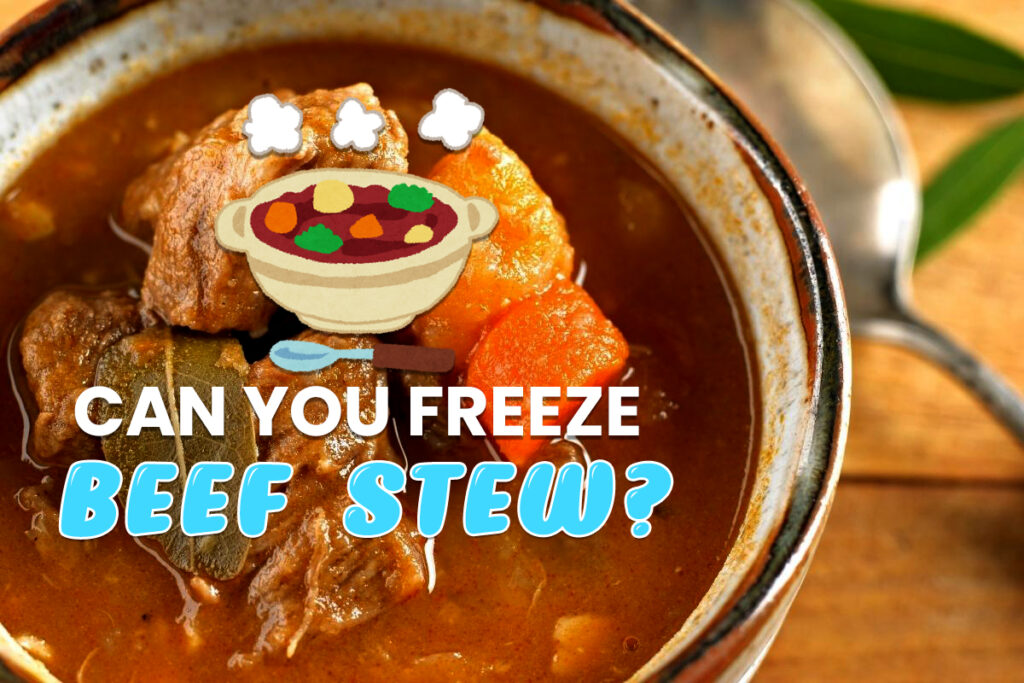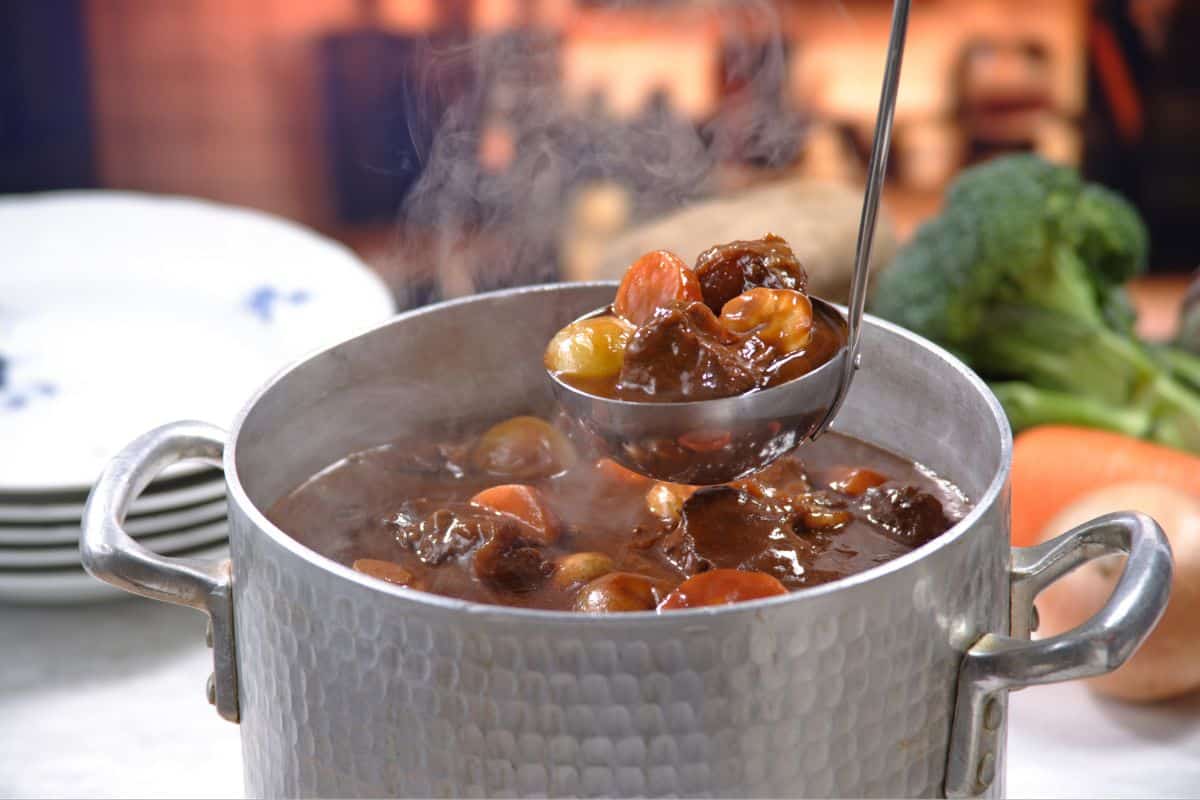Can You Freeze Beef Stew? (Updated 2025)

Had beef stew for dinner, but now you have leftovers? Don’t worry you can always put them in the freezer so you can still enjoy your delicious beef stew the next day. But how can you do it?
In this article, we’ll discuss if you can freeze beef stew. Read on for more details.
What Is a Beef Stew?
Beef Stew is a simple and delicious meal that includes beef cubes, veggies, beef stock, and seasonings. It is considered a labor-intensive meal to prepare, but it’s well worth the wait when you’re ready to unwind at the end of a hectic day with a hearty bowl of it for supper.
The answer to the question of whether or not beef stew can be frozen is yes; however, there is a specific method that must be followed in order to ensure that the beef stew retains its flavor even after being frozen and thawed for many days.
Freezing beef stew allows you to store leftovers in the fridge for up to two weeks before you simply need to thaw it in the fridge overnight and reheat it.
As a result, you may save a lot of time every so often when you get the munchies by just throwing the ingredients into a slow cooker and letting the beef stew cook itself.
How to Freeze Beef Stew
There are several ways to freeze and preserve beef stew. Let’s find out more about these ways here.
Step 1. Let It Cool
Beef stew, once prepared, should not be refrigerated until it has cooled to room temperature. On the other hand, don’t keep it out on the counter for too long, as doing so might encourage the growth of bacteria.
For this reason, speed should be of the essence when cooling the stew. The easiest way to bring a stew pot back to room temperature is to submerge it in a sink full of cold water for ten to fifteen minutes.
Step 2. Choose the Right Container
Carefully consider the size of the storage container you’ll be using before putting the stew away. Stew can be stored in a bigger container for later use, or the smaller container can be used for a single serving.
The beef stew can be frozen in plastic freezer containers, foil freezer pans, or solid, wide-mouth containers like glass jars with lids.
Keep in mind that you have to put the meat and other ingredients into the broth by pressing them down with a spoon. Then you should provide the contents with an extra inch of room over the container’s rim.
Freeze stew in containers large enough to hold enough for a family supper, or portion it out into smaller containers for later use.
Moreover, you should always keep in mind to use large containers to defrost in the refrigerator over two days.
Step 3: Remove Potatoes and Label Your Container
Clearly mark the storage containers and then put them in the fridge or freezer. Keep the container level as much as possible to prevent leaks. (Note that cornstarch and flour, among other thickeners, will separate from a liquid when frozen).
Don’t thicken your stew until you’re ready to reheat it, and consider freezing it if you have extra.
The meat and sauce should be labeled with the date they were cooked, the date they were frozen, and the amount they contain. By doing so, you can save your stew from sitting in the fridge for days on end.
Last but not least, adding potatoes is best done during warming to prevent them from becoming mushy.
How to Thaw and Reheat Beef Stew
The easiest way to thaw beef stew is to place it in the fridge the night after you take it out of the freezer. While this is the most time-consuming method, it is also the most secure for defrosting beef stew. Beef stew may be thawed rapidly in a microwave or a saucepan.
Both work great, but you’ll want to thaw the stew in boiling water first before putting it in the microwave or a saucepan.
You should remember that defrosting the meat in the refrigerator for at least 24 hours will help it sit correctly and speed up the cooking process.
Conversely, while reheating beef stew, mix the meat and sauce together in a cooking pot. Next, bring it back up to temperature very gradually over medium heat.
Moreover, to get the most flavor out of the beef, let it boil for at least 5-10 minutes before serving.
Takeaway
Beef stew is a delicious dish that you and your family will surely love. But of course, it’s normal to have leftovers, and since you don’t want to waste your tasty dish, you can always freeze and prepare for the next day.
Hopefully, the information provided above on how you can freeze beef stew has helped you understand the ways to keep it in good condition for the following day.
you may also like
well hello there!

Hi, I'm Linda thanks for stopping by! We're so happy you're here. If you're a foodie and love to cook from home - you're in the right place..
LEARN MORE
free newsletter
Join the mailing list and receive our free newsletter!
recent posts
let's be social
search site
Recipe Marker
Recipe Marker provides you with the best information about home cooking tips, recipes, ingredient substitutes and more. Check out our blog to see the latest articles.
Copyright © 2024 Recipemarker.com | All Rights Reserved | Privacy | Disclaimer | Contact









